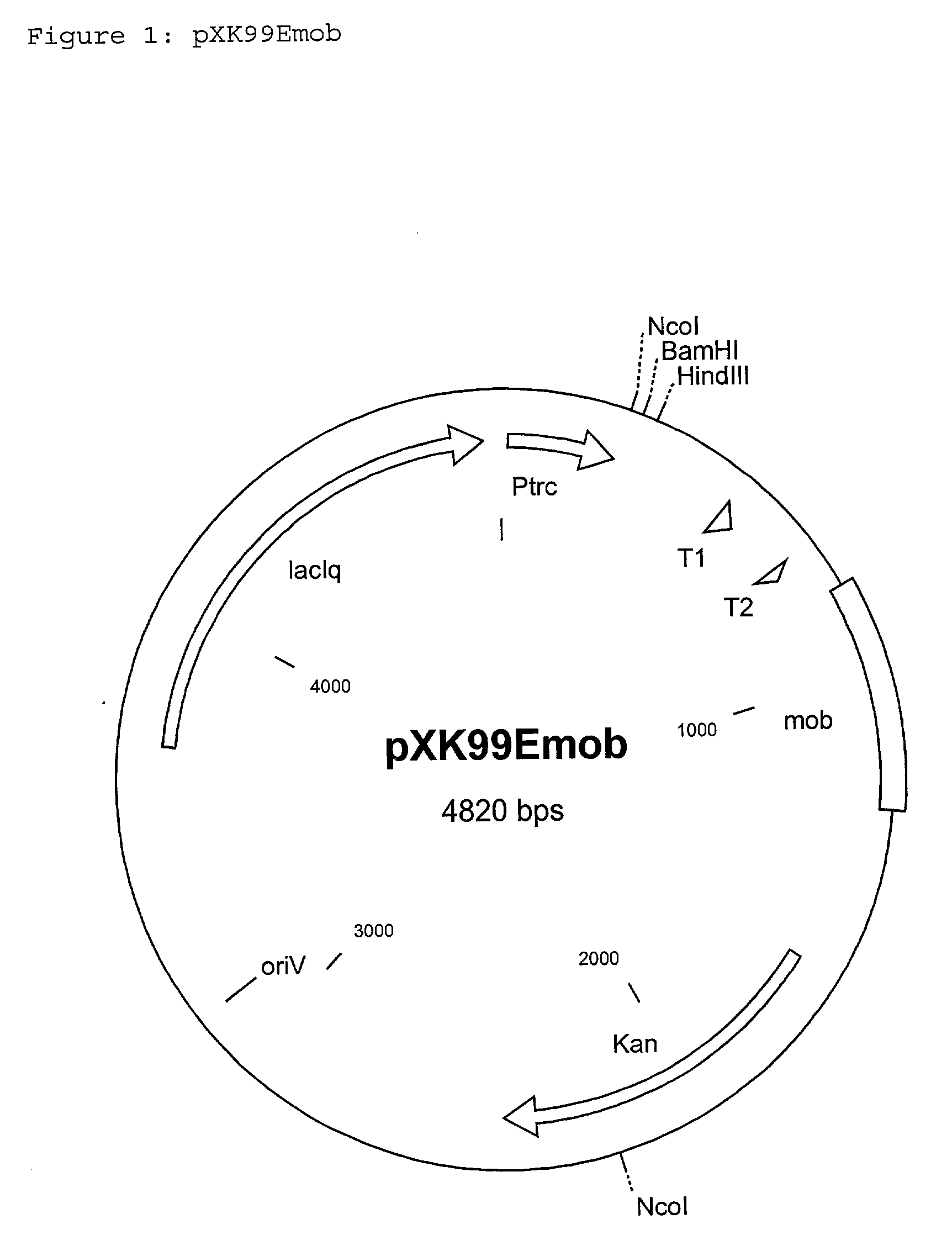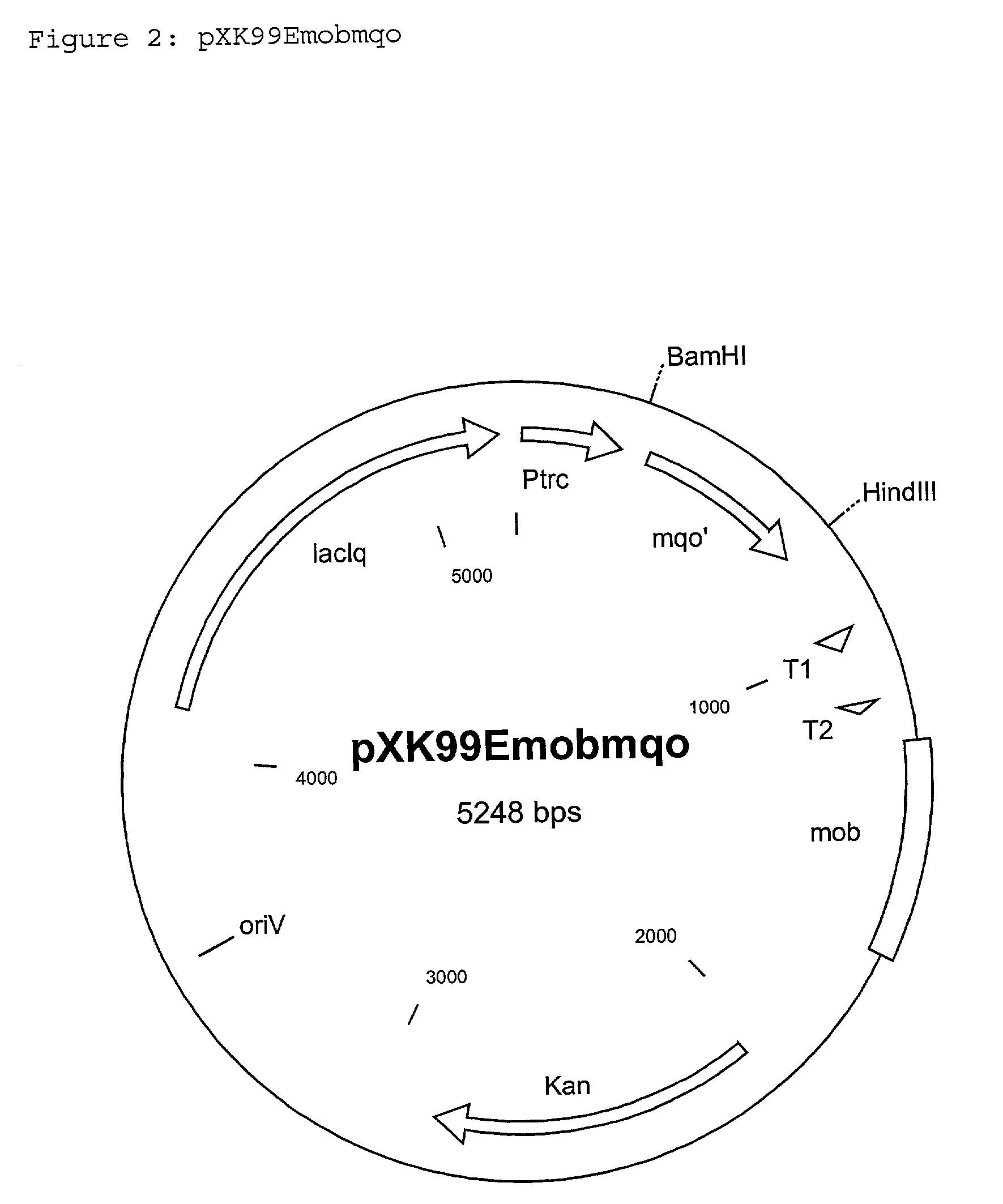Process for the production of L-amino acids by fermentation using coryneform bacteria
a technology of coryneform bacteria and production process, which is applied in the field of lamino acids, can solve the problems of frame shift mutation, premature translation break off, and premature break off of translation
- Summary
- Abstract
- Description
- Claims
- Application Information
AI Technical Summary
Benefits of technology
Problems solved by technology
Method used
Image
Examples
example 2
[0104] Integration of the vector pXK99Emobmqo into the genome of the C. glutamicum strain DSM5715
[0105] The vector pXK99Emobmqo mentioned in Example 1 was electroporated by the electroporation method of Tauch et al.,(1989 FEMS Microbiology Letters 123: 343-347) in the strain C. glutamicum DSM5715. The vector cannot replicate independently in DSM5715 and is retained in the cell only if it has integrated into the chromosome. Selection of clones with integrated pXK99Emobmqo was carried out by plating out the electroporation batch on LB agar (Sambrook et al., Molecular Cloning: A Laboratory Manual. 2.sub.nd Ed., Cold Spring Harbor, N.Y., 1989), which had been supplemented with 15 mg / l kanamycin and IPTG (1mM).
[0106] A selected kanamycin-resistant clone which has the Plasmid pXK99Emobmqo, mentioned in Example 1, inserted in the chromosomal mqo-gene of DSM5715, was called DSM5715::pXK99Emobmqo.
example 3
[0107] Preparation of lysine
[0108] The C. glutamicum strain DSM5715::pXK99Emobmqo obtained in Example 2 was cultured in a nutrient medium suitable for the production of lysine and the lysine content in the culture supernatant was determined. By addition of IPTG, attenuated expression of the mqo gene occurs, regulated by the trc promoter.
[0109] For this, the strain was first incubated on an agar plate with the corresponding antibiotic (brain-heart agar with kanamycin (25 mg / 1) and IPTG (10 .mu.M)) for 24 hours at 330.degree. C. Starting from this agar plate culture, a preculture was seeded (10 ml medium in a 100 ml conical flask). The complete medium Cg III was used as the medium for the preculture.
3 Medium Cg III NaCl 2.5 g / l Bacto-Peptone 10 g / l Bacto-Yeast extract 10 g / l Glucose (autoclaved separately) 2% (w / v) The pH was brought to pH 7.4
[0110] Kanamycin (25 mg / 1) and IPTG (10 .mu.M) were added to this. The preculture was incubated for 16 hours at 330.degree. C. at 240 rpm on a s...
PUM
| Property | Measurement | Unit |
|---|---|---|
| Fraction | aaaaa | aaaaa |
| Attenuation coefficient | aaaaa | aaaaa |
| Catalyst | aaaaa | aaaaa |
Abstract
Description
Claims
Application Information
 Login to View More
Login to View More - R&D
- Intellectual Property
- Life Sciences
- Materials
- Tech Scout
- Unparalleled Data Quality
- Higher Quality Content
- 60% Fewer Hallucinations
Browse by: Latest US Patents, China's latest patents, Technical Efficacy Thesaurus, Application Domain, Technology Topic, Popular Technical Reports.
© 2025 PatSnap. All rights reserved.Legal|Privacy policy|Modern Slavery Act Transparency Statement|Sitemap|About US| Contact US: help@patsnap.com


